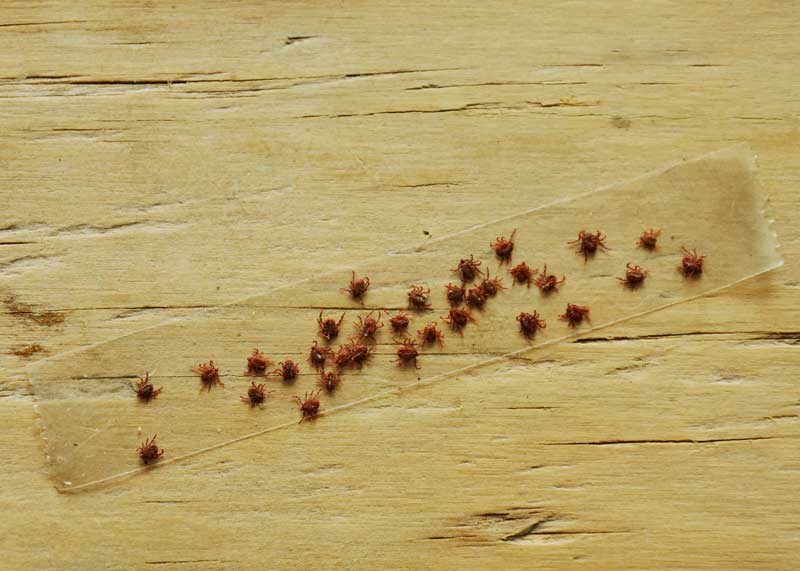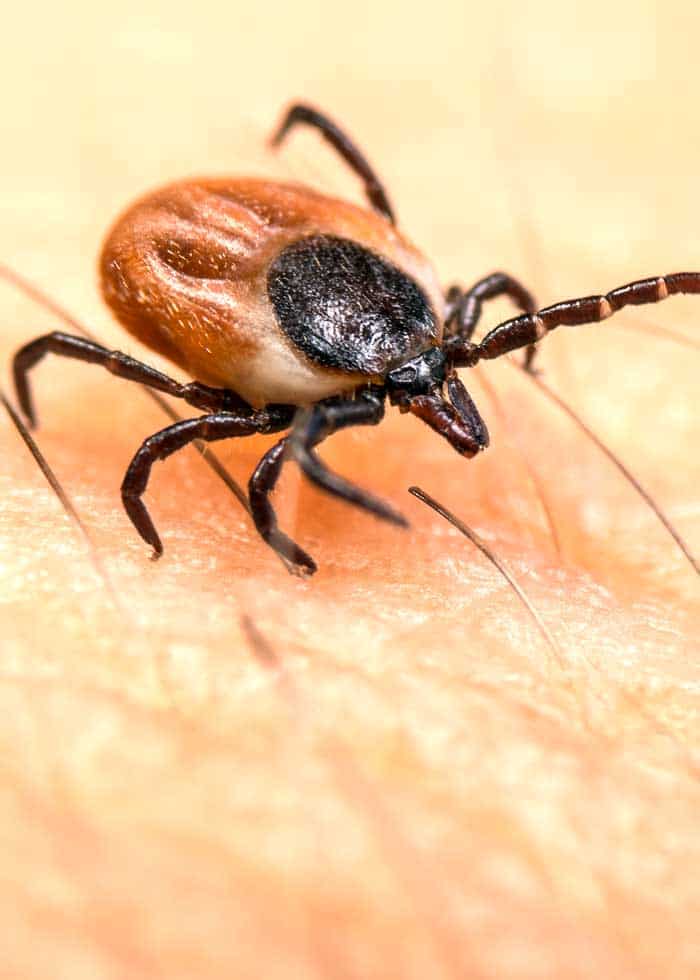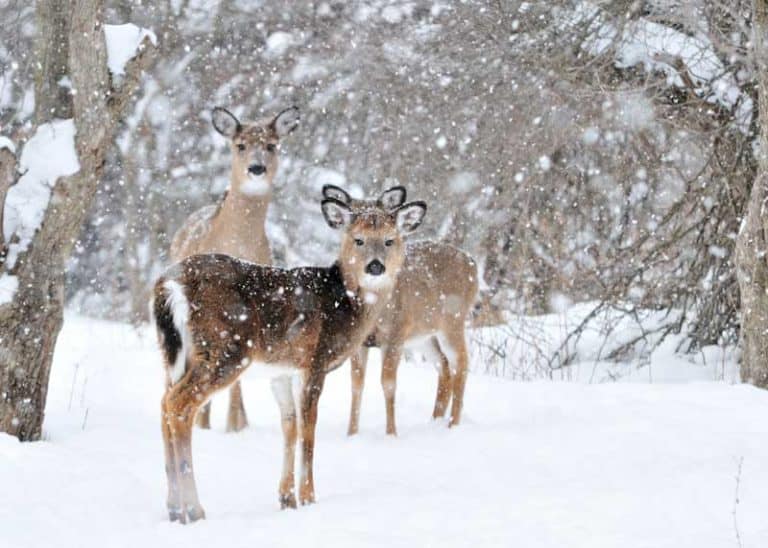Do Ticks Die in the Winter? Fatal Temperatures, Dormancy
The first hard frost is often celebrated as the end of tick season. But do ticks die in the winter? And what temperature kills ticks? You’ll learn about ticks in winter from all parts of North America.
Ticks do not die in the winter. Ticks become dormant at temperatures colder than 45 degrees Fahrenheit (7 degrees Celsius). The black-legged ticks and winter ticks are more active in the northern climates. The Gulf Coast and lone star ticks are more active in the south. They are all likely to hide in piles of leaves.

We’ll discuss why these insects don’t die and how you can continue to avoid them. The ticks mentioned above are specific to their regions, so we’ll discuss that as well.
Because of the colder temperatures, they become dormant.
What Temperature Kills Ticks?
Does a cold winter kill ticks? Yes. Ticks die at temperatures between -2 and 14 °F (-18 and -10°C) according to lab studies cited by the Pennsylvania DCNR.
But because of the amount of variables in the wild, this amounts to just 20% of the population dying off each winter.
The hardest winters on ticks are ones that have great variance in temperature. For example, a warm day might lure them out, and then a sudden cold snap might kill a larger percentage than normal.
Do Ticks Die in the Freezer?
Yes. Most deep freezers are cold enough to kill ticks. If your deep freeze is set to 0° F (-18° C), as recommended by the FDA, then it should kill the ticks.
How long does it take to kill ticks in the freezer? According to this taxidermy thread, it can take from 48 hours to more than 9 days. It depends on many factors, like insulation, species, and freezer temperature.
Tick Dormancy in Winter
The reason ticks are more active during the spring and summer is because of the temperature. Ticks become active if the temperature is 45 degrees Fahrenheit or above (7 degrees Celsius).
At this temperature, hardshell and softshell ticks will go searching for blood.
Hardshell Ticks in Winter
Hardshell ticks are the type of tick that we encounter most frequently because they feed off of mammals like deer, dogs, and cats.
When the temperature falls below 45°F (7°C) this need for blood diminishes. Ticks will either become more dormant, or they will latch onto a host to feed on during the winter.
In order to maintain a regular body temperature, hardshell ticks will hide in the leaf litter that is found in wooded areas or areas that have a lot of brush.
When snow falls, it creates another layer of insulation to keep the ticks warm.
Softshell Ticks in Winter
Softshell ticks are more likely to become dormant in underground burrows or dens. If the cold begins to penetrate where they are, they will burrow more deeply into the soil.
Even if the temperature does not rise above 45°F (7°C) the ticks can still survive.
Adult ticks are able to go months without feeding, which helps them to survive the cold freezes that we may wish would kill this species.
Northern Ticks in Winter
In the northern parts of the United States and across Canada, winters are much colder. As a result, the activity of ticks may be less commonly seen.
However, if the temperature rises above 45°F (7°C), the ticks may come out to feed. This applies to the general family of ticks.
There are two species of ticks in the north that are much more active during the winter: the black-legged and winter ticks.
Black-legged ticks
Black-legged ticks, more commonly known as deer ticks, are much more active in the winter. This is because of the deer the ticks feed on. The prime feeding season for the deer is during the winter.
Additionally, these ticks can maintain a stable body temperature in colder weather.
As long as the weather is above freezing, 35°F (1°C), and there is no snow on the ground, these ticks can become active, according to James Burtis, a postdoctoral associate in the Entomology Department, Cornell University.
These are the ticks that are known to be carriers of Lyme disease, so it is important to take precautions to avoid them (see the end of the article for tips on avoiding these pests).
Winter ticks
Winter ticks are active in the same temperatures and conditions that black-legged ticks are.
They primarily feed on moose, though they do sometimes feed on deer. Winter ticks are most commonly seen in the northeastern part of the country.
In order to survive during the winter, they latch onto their host, which will be their source of food and warmth throughout the winter. If they are not able to find a host, they will die in about three months.
More reading: Campers Guide to Essential Oil Bug Repellent
Southern Ticks
Because winters in the south are milder, ticks are much more likely to be active.
There are two in particular that are most frequently active: gulf coast and lone star ticks.
When the temperatures are warmer, there is more opportunity for the ticks to breed. A female tick will deposit up to 3,000 eggs in a nest.
When the weather becomes colder, their habits are quite similar to the ticks in the north. They will burrow in deep soils and leaf litter and other general areas that will help protect them from fluctuations in the temperature.
It is important to follow precautions while you’re out and about because of the diseases these ticks carry.
The Gulf Coast tick is a carrier of a variation of spotted fever, and the lone star tick is a carrier of tularemia and ehrlichiosis. These diseases are dangerous and it is smart to use repellants while exploring outside.
Here are some of the best tick repellants.

Here’s more about what happens to other bugs in the winter.
Can You Squish a Tick? Plus 17 More Gross Tick Facts

More reading: 14 Homemade Insect Repellent Recipes (That Actually Work!)
Your Turn
Have you seen a tick in the winter? Let me know what part of the world you live in. I would love to hear about your experiences with ticks in cold weather.






